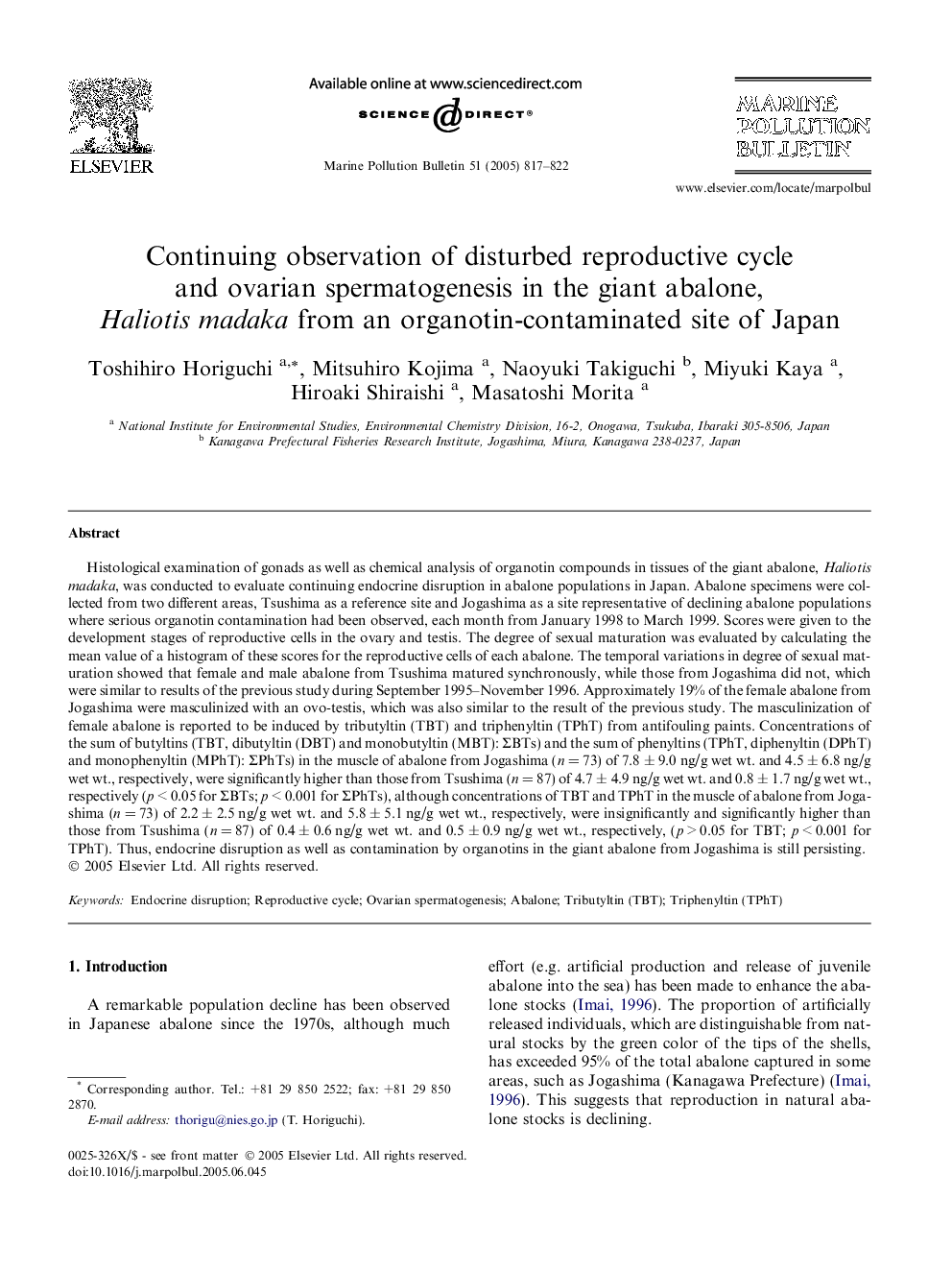| Article ID | Journal | Published Year | Pages | File Type |
|---|---|---|---|---|
| 9465823 | Marine Pollution Bulletin | 2005 | 6 Pages |
Abstract
Histological examination of gonads as well as chemical analysis of organotin compounds in tissues of the giant abalone, Haliotis madaka, was conducted to evaluate continuing endocrine disruption in abalone populations in Japan. Abalone specimens were collected from two different areas, Tsushima as a reference site and Jogashima as a site representative of declining abalone populations where serious organotin contamination had been observed, each month from January 1998 to March 1999. Scores were given to the development stages of reproductive cells in the ovary and testis. The degree of sexual maturation was evaluated by calculating the mean value of a histogram of these scores for the reproductive cells of each abalone. The temporal variations in degree of sexual maturation showed that female and male abalone from Tsushima matured synchronously, while those from Jogashima did not, which were similar to results of the previous study during September 1995-November 1996. Approximately 19% of the female abalone from Jogashima were masculinized with an ovo-testis, which was also similar to the result of the previous study. The masculinization of female abalone is reported to be induced by tributyltin (TBT) and triphenyltin (TPhT) from antifouling paints. Concentrations of the sum of butyltins (TBT, dibutyltin (DBT) and monobutyltin (MBT): ΣBTs) and the sum of phenyltins (TPhT, diphenyltin (DPhT) and monophenyltin (MPhT): ΣPhTs) in the muscle of abalone from Jogashima (n = 73) of 7.8 ± 9.0 ng/g wet wt. and 4.5 ± 6.8 ng/g wet wt., respectively, were significantly higher than those from Tsushima (n = 87) of 4.7 ± 4.9 ng/g wet wt. and 0.8 ± 1.7 ng/g wet wt., respectively (p < 0.05 for ΣBTs; p < 0.001 for ΣPhTs), although concentrations of TBT and TPhT in the muscle of abalone from Jogashima (n = 73) of 2.2 ± 2.5 ng/g wet wt. and 5.8 ± 5.1 ng/g wet wt., respectively, were insignificantly and significantly higher than those from Tsushima (n = 87) of 0.4 ± 0.6 ng/g wet wt. and 0.5 ± 0.9 ng/g wet wt., respectively, (p > 0.05 for TBT; p < 0.001 for TPhT). Thus, endocrine disruption as well as contamination by organotins in the giant abalone from Jogashima is still persisting.
Related Topics
Physical Sciences and Engineering
Earth and Planetary Sciences
Oceanography
Authors
Toshihiro Horiguchi, Mitsuhiro Kojima, Naoyuki Takiguchi, Miyuki Kaya, Hiroaki Shiraishi, Masatoshi Morita,
